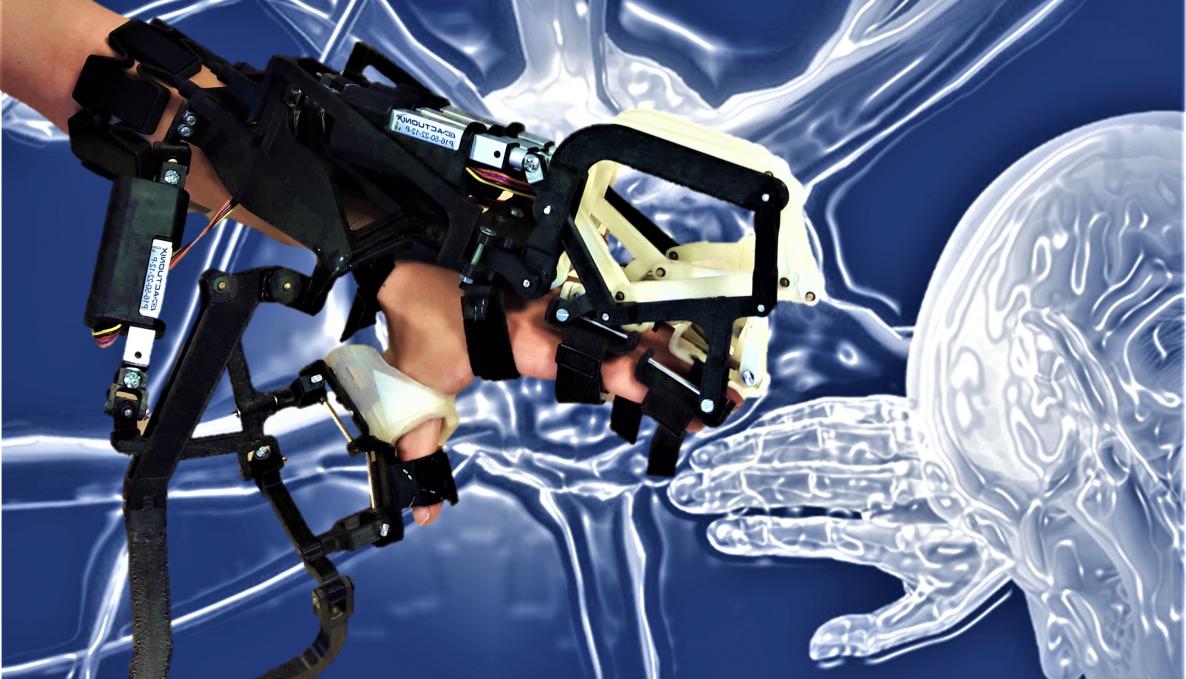real-time high density electromyography to control robotic devices. A study co-authored by SANT'ANNA school RESEARCHERS published in Special issue on Intelligent Human-Robot Interaction

The myoelectric control of dexterous prosthetic devices and exoskeletons with neuromuscular interfacing is still a challenging task. Myoelectric signals, i.e. electric biological signals generated by the motor neurons connected to the muscle fibers, are used to control assistive devices, wearable devices, robotic exoskeletons and teleoperated robots (bilateral robot remote operations).
Sant’Anna School Researchers of Perceptual Robotics (PERCRO Lab.) have focused on the functionality of prosthetic hands and measured these signals through an electromyography (EMG) circuit. The EMG circuit amplifies the signals and generates the control commands as muscle activity provides an intuitive interface to perform gesture recognition. As myoelectric control interfaces typically require an extensive calibration, scientists proposed a simultaneous finger force estimation based on ridge regression using individual finger tasks. Results demonstrate the feasibility of proportional and simultaneous finger control by real-time high-density signals recording with 192 electrodes over the forearm surface.
Using recognition of individual movements of the fingers, data gathered from 8 healthy subjects without amputations demonstrated a rapid calibration and achieved performance accuracy using decoding algorithms to match the speed requirement of real-time applications. Participants gained rapid closed-loop neural cursor control using two feature sets extracted from high-density EMG recordings: EMG linear envelope (ENV) and non-linear EMG. The non-linear transformation improved the performance, leading to higher completion rate and more stable control, especially for the non-trained movement classes (better generalization).
Complex coordination patterns in healthy subjects show the possibility for a future application to neurologically impaired subjects rehabilitation. The study, under the supervision of Professor Antonio Frisoli from Sant’Anna School “Human Robot Interaction” research area and Professor Dario Farina, Chair in Neurorehabilitation Engineering at the Imperial College – London, is published in the “Special issue on Intelligent Human-Robot Interaction for Rehabilitation and Physical Assistance” - “IEEE Robotics and Automation Letters”.
Michele Barsotti, Sigrid Dupan, Ivan Vujaklija, Strahinja Dosen, Antonio Frisoli and Dario Farina co-authored the paper “Online Finger Control Using High-Density EMG and Minimal Training Data for Robotic Applications”.



